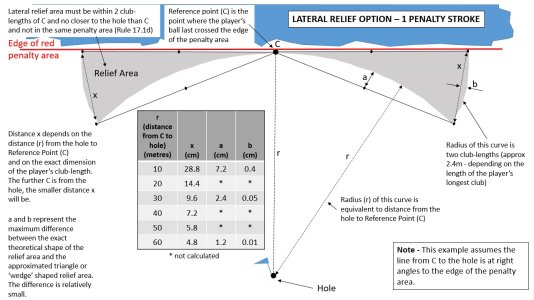timd77
Assistant Pro
Hi, I’m sure this has been asked a before but I wanted to add the specifics of my course, we have 2 holes affected by ponds, both red stakes with a red line sprayed around them approx a yard from the water.
On the first hole, it’s a par 4, pond next to the green which sucks you in. In the summer if you hit the green too far left the ball can easily roll off the green and into the water. In fact, I’ve seen a putt roll into the water! Where do you drop for this? On that red line where the ball crossed making sure you’re not nearer the hole? Or do you have to go around the other side of the pond?
The second one is a par 3 over the pond, green slopes back to front. Obviously if you plop the ball straight in you drop this side of the water, but again, it’s easy to clear the water, ball pitches into the fringe and trickles back into the water. So with this, again, can you drop along the red line as long as you’re not nearer the hole from where the ball crossed?
Hoping I never need to use this but it’s bound to happen!
Cheers
On the first hole, it’s a par 4, pond next to the green which sucks you in. In the summer if you hit the green too far left the ball can easily roll off the green and into the water. In fact, I’ve seen a putt roll into the water! Where do you drop for this? On that red line where the ball crossed making sure you’re not nearer the hole? Or do you have to go around the other side of the pond?
The second one is a par 3 over the pond, green slopes back to front. Obviously if you plop the ball straight in you drop this side of the water, but again, it’s easy to clear the water, ball pitches into the fringe and trickles back into the water. So with this, again, can you drop along the red line as long as you’re not nearer the hole from where the ball crossed?
Hoping I never need to use this but it’s bound to happen!
Cheers


